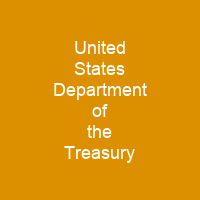The U.S. Department of the Treasury: A Historical Overview
Imagine a vast, intricate machine that powers an entire nation’s financial health—this is what the U.S. Department of the Treasury (USDT) represents. Established in 1789, it has grown from a simple entity managing government revenue to a complex network overseeing everything from currency circulation and tax collection to fiscal policy advice. Alexander Hamilton, as its first secretary, laid down the foundational stones that have shaped this department into what it is today.
Origins and Early Days
The history of the USDT began during the American Revolution when the Continental Congress issued paper money to fund the war effort. But managing finances was no easy task, as evidenced by the Treasury Office’s reorganization three times between 1778 and 1781 due to rapid devaluation of paper bills. It wasn’t until Robert Morris took on the role of Superintendent of Finance in 1781 that stability began to be restored.
Modern Challenges
The USDT has faced numerous challenges over the years, from data breaches to reorganizations due to homeland security concerns. In 2020, a significant data breach affected at least eight federal departments, likely caused by a nation-state adversary such as Russia. This incident underscores the ongoing need for robust cybersecurity measures within the department.
Key Responsibilities
The USDT’s responsibilities are vast and varied. From producing currency and coinage to collecting taxes and paying bills, it plays a crucial role in managing federal finances. It also supervises national banks and advises on financial policy matters. The department is organized into two major components: departmental offices responsible for policy formulation and management, and operating bureaus that carry out the day-to-day operations.
Notable Figures
The USDT has seen many notable figures in its history. Sophia Holmes stands out as a pioneering figure; she became the first Black woman employed by the Treasury Department in 1861, working as a janitor for $15 per month before preventing a major theft of over $200,000. Her story is a testament to the department’s evolving role and its commitment to inclusivity.
Current Operations
The USDT operates with an authorized budget of $16.5 billion for Fiscal Year 2024 and employs over 70,000 people across various bureaus. Despite this size, the department has received a low grade in the latest Center for Effective Government analysis of Freedom of Information Act processing performance. This highlights the ongoing need for transparency and efficiency within the organization.
Future Directions
The USDT continues to adapt to new challenges, from managing digital currencies to enhancing cybersecurity measures. As technology evolves, so too must the department’s strategies to ensure the financial health of the nation remains robust.

The U.S. Department of the Treasury is a cornerstone of our nation’s financial system, evolving with each challenge it faces. From its humble beginnings during the American Revolution to its current role in managing digital currencies and enhancing cybersecurity, the USDT continues to play an indispensable part in shaping America’s economic future.
You want to know more about United States Department of the Treasury?
This page is based on the article United States Department of the Treasury published in Wikipedia (retrieved on December 31, 2024) and was automatically summarized using artificial intelligence.




